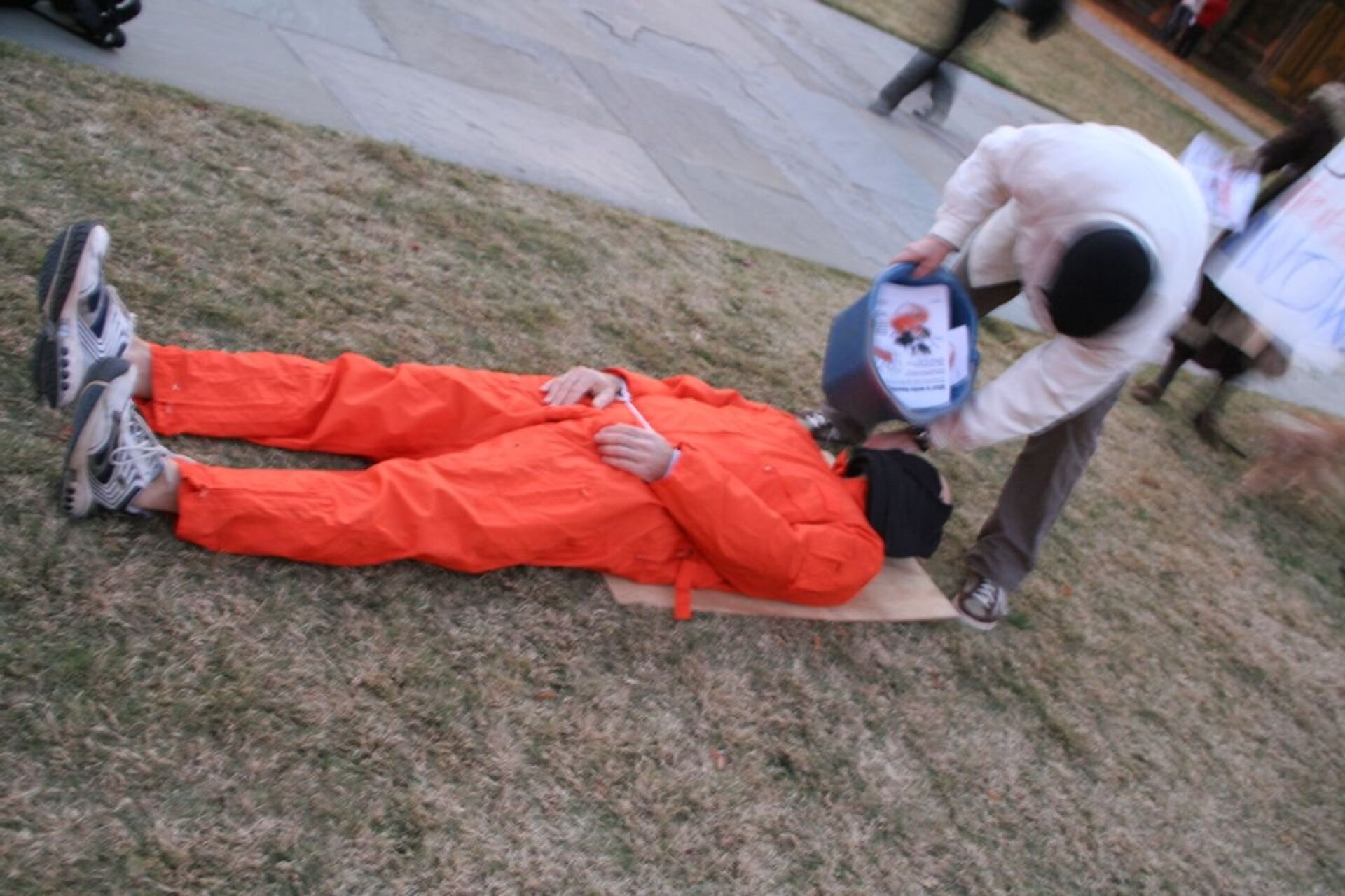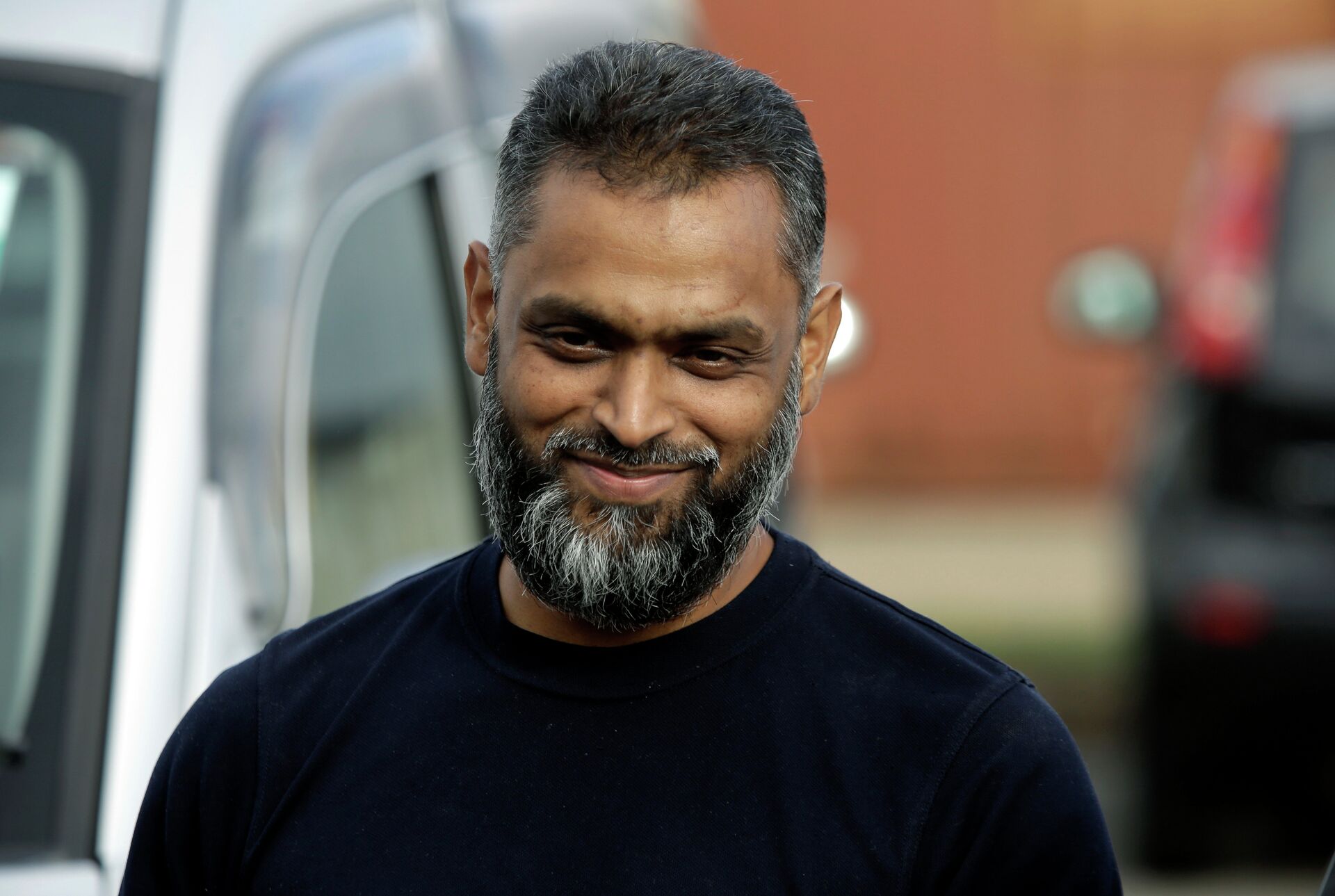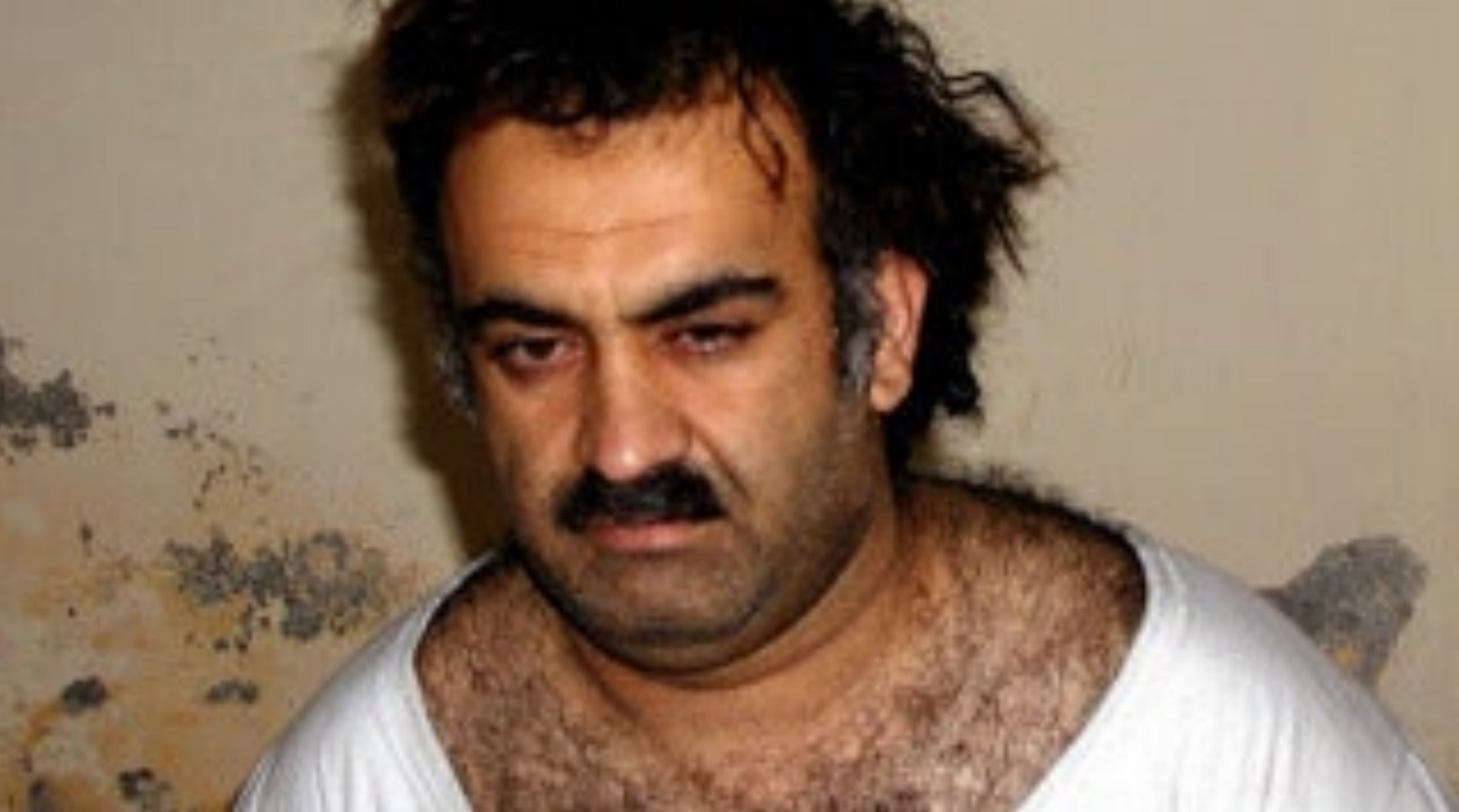20 Years After 9/11 Why Are 39 People Still Detained at Guantanamo and Will They Ever Face Trial?
15:22 GMT 09.09.2021 (Updated: 18:01 GMT 08.12.2022)

© AP Photo / Lynne Sladky, File
Subscribe
In the wake of the US-led invasion of Afghanistan in 2001 almost 800 men were captured, many of them with the help of bounty hunters. President George W. Bush decided to create a detention camp at Guantanamo Bay, a strip of US territory on the island of Cuba.
When al-Qaeda carried out the 9/11 attack and 3,000 innocent people were killed the world sympathised and there was an outpouring of goodwill towards the United States.
The US accused the Taliban of sheltering Osama bin Laden and his al-Qaeda training camps and they promptly invaded Afghanistan, capturing Kabul and setting up a pro-western government.
They failed to capture Bin Laden who, after hiding in the Tora Bora caves in eastern Afghanistan, slipped away and went into hiding in Pakistan.

In this file photo the rubble of the twin towers of the World Trade Center smoulder following a terrorist attack in lower Manhattan, New York on September 11, 2001.
© AFP 2023 / ALEXANDRE FUCHS
But the Americans did scoop up 779 individuals who they claimed were suspected al-Qaeda terrorists.
Bounties paid
Some were captured in Afghanistan, others were found in northern Pakistan or even further afield and handed over by bounty hunters who were promised US$5,000 a head.
The White House did not want to build a prison in Afghanistan but nor did it want to bring them back to the US, where they would be entitled to access to lawyers and would have other basic human rights.
Instead it used “extraordinary rendition” to fly the detainees to various secret “black sites” in friendly countries like Egypt, Morocco and Poland.
There they were tortured.

Students protest at a talk given by Karl Rove by demonstrating waterboarding at Duke University on December 4, 2007
© Flickr / Robin Kirk
A secret Department of Justice memo in 2002 listed several so-called “enhanced interrogation techniques” which it approved - sleep deprivation, face slapping, wall standing, insects placed in confinement box, and waterboarding, in which a piece of cloth is held over the face and water poured over it to induce a feeling of drowning.
Reliability Doubts About Torture Information
One of the detainees, Ibn al-Shaykh al-Libi, after being waterboarded in Egypt, told his captors Saddam Hussein was in league with al-Qaeda.
This morsel of “intelligence” was used by US Secretary of State Colin Powell in a speech to the UN to justify the proposed invasion of Iraq.
Asked later why he had lied, al-Libi reportedly told his captors he had simply told him what he knew would stop the torture.
In the spring of 2002 the Pentagon built Camp Delta, a detention camp at Guantanamo Bay, a small strip of US territory in Cuba which had been leased in perpetuity as part of the deal which ended the Spanish-American War in 1898.
As human rights lawyer Michael Paradis says in the Netflix documentary Turning Point, it was the legal equivalent of “outer space.”
The Bush administration said it would put the detainees on trial in special military commissions, which would not be subject to US law.
Supreme Court Rules Military Trials Illegal
In 2006 the US Supreme Court said these military commissions were illegal, but the Bush administration simply responded by pushing through legislation which allowed them.
The Bush administration would eventually free 532 of the detainees and Obama - who promised on entering the White House in January 2009 that he would close Guantanamo - freed another 197.
Most of the freed detainees were sent back to their own countries - such as Moazzam Begg and Feroz Abbasi, who were both repatriated to Britain and never charged with any offences.
Only a tiny fraction of the detainees were ever put on trial in the US.

British Moazzam Begg leaves Belmarsh Prison in south London, after his release, Wednesday, Oct. 1, 2014
© AP Photo / Lefteris Pitarakis
Ahmed Ghailani - who was one of the 14 so-called “high value detainees” - stood trial in a New York City federal court and is now serving a sentence in a supermax prison in Colorado, after being convicted of bombing the US embassy in Tanzania in 1998.
In 2018 President Trump - who freed one detainee from Guantanamo in his four years in office - signed an executive order to keep it open and ordered the Pentagon to "re-examine" military detention policy.
So Who Are The Remaining 39?
But as of 9 September 2021 there are still 39 detainees at Guantanamo.
They include Khalid Sheikh Mohammed, who was captured by Pakistani police in Rawalpindi in 2003 and is suspected of being the mastermind of the 9/11 plot.

Khalid Sheikh Mohammed
© AP Photo
In 2011 Jason Wright, was hired to be Khalid Sheikh Mohammed’s military public defender, and he told Netflix’s Turning Point documentary his client had been waterboarded 183 times and subjected to 180 hours of sleep deprivation.
Mohammed, now 57, is due to go on trial in November this year and if convicted by the military commission he would face the death penalty. In July the chief prosecutor quit.
He has four co-defendants - Walid bin Attash, Ammar al-Baluchi, Mustafa al Hawsawi and Ramzi bin al-Shibh - who are also Guantanamo detainees.
They are all accused of being part of the al-Qaeda group which drew up the plan for 9/11 and al-Shibh was allegedly a close friend of Flight 11 pilot Mohammed Atta and a key member of the so-called Hamburg cell.
An ABC reporter who was given a tour of the Guantanamo courtroom last week reported: “There is a sound-proof gallery where 53 reporters and family members of 9/11 victims and survivors of the terrorist attacks can watch the proceedings through sound-proof glass. A blue curtain separates family members of victims or 9/11 survivors from the press, if they wish to pull it closed for privacy. The proceedings can also be observed by members of the public at Fort Meade, Maryland via closed-circuit TV.”
Majid Khan, who agreed a plea deal in 2012, is expected to be a key prosecution witness in the 9/11 trial. As part of the deal Khan, who was detained in Pakistan in 2003, will be freed next year.
Still No Sign Of Guantanamo Closing
Of the 33 other detainees, some have been cleared for release while others face “indefinite detention.”
In May 2021 Abdul Rahim Mohammed, a Yemeni, and two Pakistanis, Saifullah Paracha and Abdul Rahim Ghulam Rabbani, were recommended for release by President Joe Biden and a fourth man, Abdu Ali Sharqawi, was recommended for release by Camp Delta’s Periodic Review Board in June this year.
The two other big names on the list are Abu Faraj al-Libi and Abu Zubaydah.
Al-Libi, 50, was allegedly al-Qaeda’s third in command between 2003 and 2005. No date has been set for his trial.
Abu Zubaydah, who was born to Palestinian parents in Riyadh in 1971, is said by the CIA to have been one of Bin Laden’s top lieutenants but he is said to be mentally ill now, possibly as a result of torture. He is unlikely to be released or put on trial.



